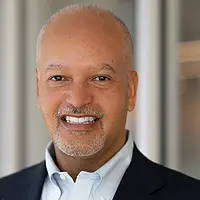
Photo credit: Marian Siljeholm/USAID Jifunze Uelewe
In 2015, the world felt like a more hopeful place. Global poverty was falling and the United Nations launched a new series of ambitious global goals known as the Sustainable Development Goals (SDGs). Global consensus and collective action toward a better world felt strong.
To state the obvious, things did not go as planned. Climate change accelerated. The pandemic increased poverty and left the world more unequal than before. And Russia’s war in Ukraine rocked global markets and food security. Today, most of the SDGs are off track for achievement by 2030.
It has left many, including myself, wondering: Are the SDGs—and the collective aspiration and action they represent—still relevant?
I argue they are—and that progress in achieving them is still possible. It will, however, require us to shift our perspectives as global citizens and take the long view.
Collective aspiration and action matter
First, let's start with the prevailing criticisms of the SDGs.
They’ve been criticized as being overly engineered and complex. Indeed, there are 17 goals, each with their own set of sub-indicators and targets. They took years of United Nations meetings and negotiations to finalize. I remember these criticisms well as I took part in meetings on the SDGs on poverty and hunger back in 2014 when I served as head of USAID’s Bureau for Food Security.
The power of the process wasn’t that it was fast. It was cumbersome for a reason: It was a broad, inclusive process that brought together the global community and drove ownership at every level for the goals, from technical staff all the way up to heads of state.
The process resulted in a set of goals that the global community—from businesses to governments to academics to nonprofits and citizens—agreed were important and worth measuring. Importantly, the process articulated our collective aspiration about the world we want to live in, and it resulted in concrete action.
Those two ingredients—collective aspiration and action—are key factors that have enabled humanity to achieve great things.
We don’t build bridges or eradicate diseases one person at a time. Instead, throughout the course of history, we’ve set collective visions that pull people together to accomplish big things. In his book, Sapiens: A Brief History of Humankind, Yuval Noah Harari details how our collective actions as human beings helped us move from the middle of the food chain to the top. The SDGs serve as an organizing force to ensure that our collective impact is positive for a better future.
Another criticism is that the SDGs are unrealistic. I would argue that no one ever thought they would be easy; they were ambitious by design. We didn’t want to shoot for easy when we looked at the tremendous wealth and technological advancements we’d achieved as a collective humanity.
High aspirations shift the discourse, name the progress we believe is possible, and force action and innovation. Given today’s challenges, now is not the time to lower our aspirations for humanity.
Progressing toward the future we want
Two perspective shifts are needed for us to move forward on the SDGs.
First, we need to look beyond the present to the long-term and consider the world we all want to live in. This requires looking beyond personal and national interests. Today’s challenges have driven many to turn inward and adopt a scarcity and fear-based mindset. This pits us against one another when really we need to be looking at what we can achieve when we work together.
When I reflect on the importance of taking a long-term, collective view, I’m reminded of the famous quote from Dr. Martin Luther King, Jr., that “Injustice anywhere is a threat to justice everywhere.” You could easily replace “injustice” with any of the problems the SDGs seek to remedy—poverty, hunger, climate change, poor health, and more—and the quote would be equally powerful and truthful.
What is less quoted, but incredibly relevant, is the sentence following that one: “We are caught in an inescapable network of mutuality, tied in a single garment of destiny.” Our problems are collective, shared problems, and they require collective action to fix.
We have a choice to make: Do we want to live in a neighborhood where our fellow neighbors are poor and sick, or do we want to live in neighborhoods where we care for one another and all enjoy privileges, safety, prosperity, and health.
The second perspective shift is around expectations for progress. The triple threat of COVID-19, climate change, and conflict has derailed progress on achieving the SDGs. The pandemic alone led to 97 million more people living in extreme poverty in 2020, which is a historically unprecedented increase.
Yet, if we zoom out and look at the course of history, there is going to be another pandemic, another war, another economic downturn at some point. These are predictable global issues that slow progress. Progress over time hasn’t been linear, but it has happened and is generally on an upward trend, as my friend and former USAID Chief Economist Steven Radelet so persuasively detailed in his book, The Great Surge: The Ascent of the Developing World. For example, even with setbacks, humanity has made great strides in reducing inequality, unnecessary deaths, and getting girls into school.
What I’ve seen in my time working in development is that there are windows of opportunity, despite catastrophes like war and recession, where we can push hard and make a lot of progress so we’re at a higher baseline before the next crisis comes. The fact that we are off track on the SDGs should motivate us to act and innovate to achieve more, and look for windows of opportunity to do so.
Still relevant, but we need to recommit to achieving the SDGs
The SDGs helped us collectively imagine what a better world would look like and how we could get there. This fall, at the halfway point to 2030, the global community will recommit to them and discuss what’s needed to get back on track. I’m optimistic that progress is still possible, though it may look different than what we expected. We need to take a long-term view to remain hopeful and focused.
In my roles as chair of USAID’s Advisory Committee on Voluntary Foreign Aid and on the Development Advisory Council of the U.S. Development Finance Corporation, I have the opportunity to interact with government professionals who spend their careers on goals like the SDGs. As an international development organization, as well as a leading global research institute that partners with them, the role of organizations like RTI is to drive innovation and explore how the application of new and existing science can accelerate progress. For example, research RTI has done on resilience is critical to moving us closer to a world where no poverty and zero hunger—a SDG I hold particularly dear—is achievable.
As we look forward to 2030 and beyond, we need to recommit to bold aspirations and collective action in the face of continuing and real challenges that threaten humanity’s progress. In a world where crises are cyclical and uncertainty is the norm, the SDGs are a valuable tool for keeping us focused on the future we want and heading in that direction together.
Learn more about RTI’s global commitment to improving the human condition.
